International Steel Prices
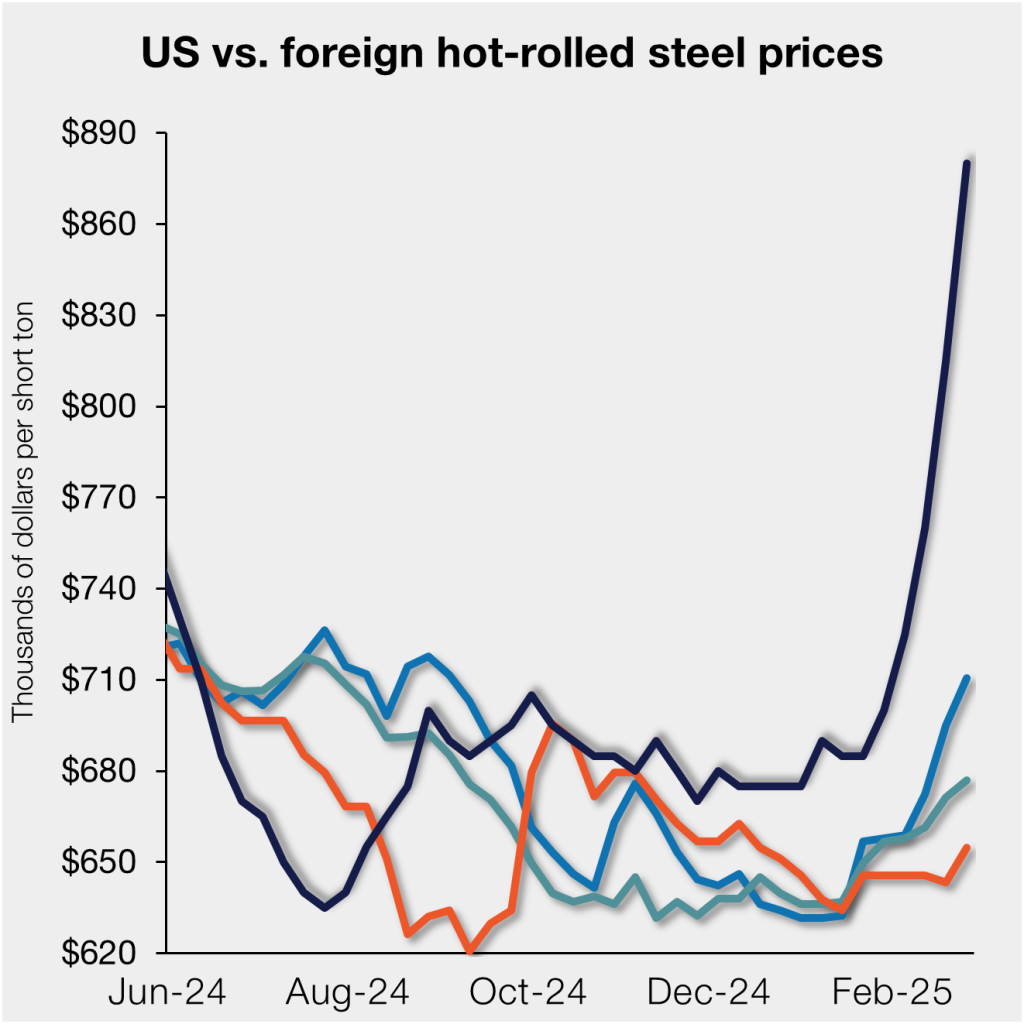
US HR prices rising faster than offshore tags
Written by David Schollaert
February 27, 2025
Hot-rolled (HR) coil prices continued to rally in the US this week, quickly outpacing price gains seen abroad. The result: US hot band prices have grown widely more expensive than imports on a landed basis. The premium US HR tags carry over HR prices abroad now stands at a 14-month high.
SMU’s average domestic HR price this week was $880 per short ton (st), up $65/st vs. the week before and up nearly $200/st over the past month. Mills continue to move prices higher, backed by threats of tariffs on imports of steel. US hot band prices are at their highest point since last February.
Domestic HR is now theoretically 22.6% more expensive than imported material, up from 17.8% last week. That’s the widest margin since January 2024. Recall that US prices were ~12% cheaper than imports just seven months ago.
In dollar-per-ton terms, US HR is now, on average, $199/st more expensive than offshore product (see Figure 1). That’s roughly $54/st higher than the prior week and about $271/st above late July when US tags were ~$72/st cheaper than offshore material.
The charts below compare HR prices in the US, Germany, Italy, and Asia. The left side highlights prices over the last two years and the right side zooms in to show more recent trends.
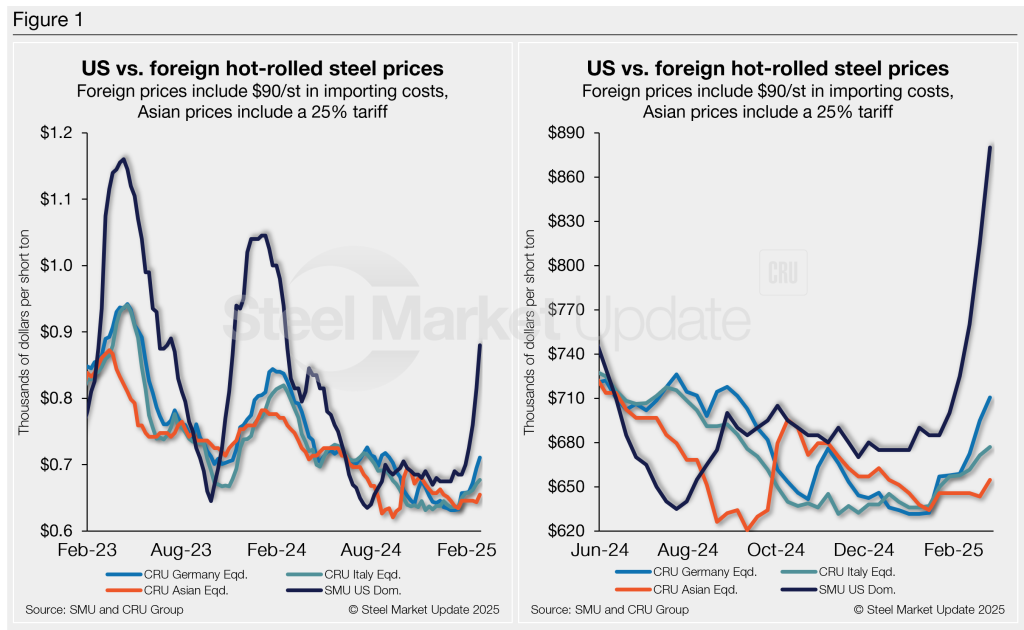
Methodology
This is how SMU calculates the theoretical spread between domestic HR coil prices (FOB domestic mills) and foreign HR coil prices (delivered to US ports): We compare SMU’s weekly US HR assessment to the CRU HR weekly indices for Germany, Italy, and East and Southeast Asian ports. This is only a theoretical calculation. Import costs can vary greatly, influencing the true market spread.
We add $90/st to all foreign prices as a rough means of accounting for freight costs, handling, and trader margin. This gives us an approximate CIF US ports price to compare to the SMU domestic HR coil price. Buyers should use our $90/st figure as a benchmark and adjust up or down based on their own shipping and handling costs.
If you import steel and want to share your thoughts on these costs, please get in touch with the author at david@steelmarketupdate.com.
Asian HRC (East and Southeast Asian ports)
As of Thursday, Feb. 27, the CRU Asian HRC price was $452/st, up $9/st vs. the week prior. Adding a 25% tariff and $90/st in estimated import costs, the delivered price of Asian HRC to the US is ~$655/st. As noted above, the latest SMU US HR price is $880/st on average.
The result: Prices for US-produced HR are theoretically $225/st higher than steel imported from Asia – roughly $53/st higher week over week (w/w). The premium is still significantly lower than about a year ago when US HR was as much as $281/st more expensive than Asian products.
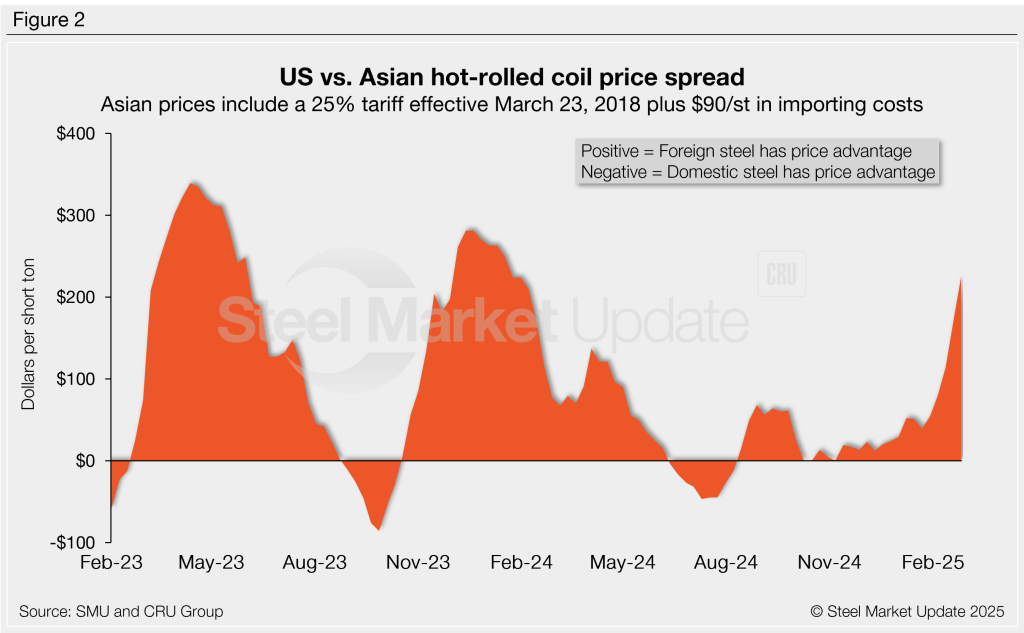
Italian HRC
Italian HR prices were $5/st higher this week at $587/st, according to CRU. After adding import costs, the delivered price of Italian HR is, in theory, $677/st.
That means domestic HR coil is theoretically $203/st more expensive than imports from Italy. With Italian tags up just $20/st over the past month, stateside prices have surged further ahead. The spread is $60/st higher w/w and at its widest margin since January 2024.
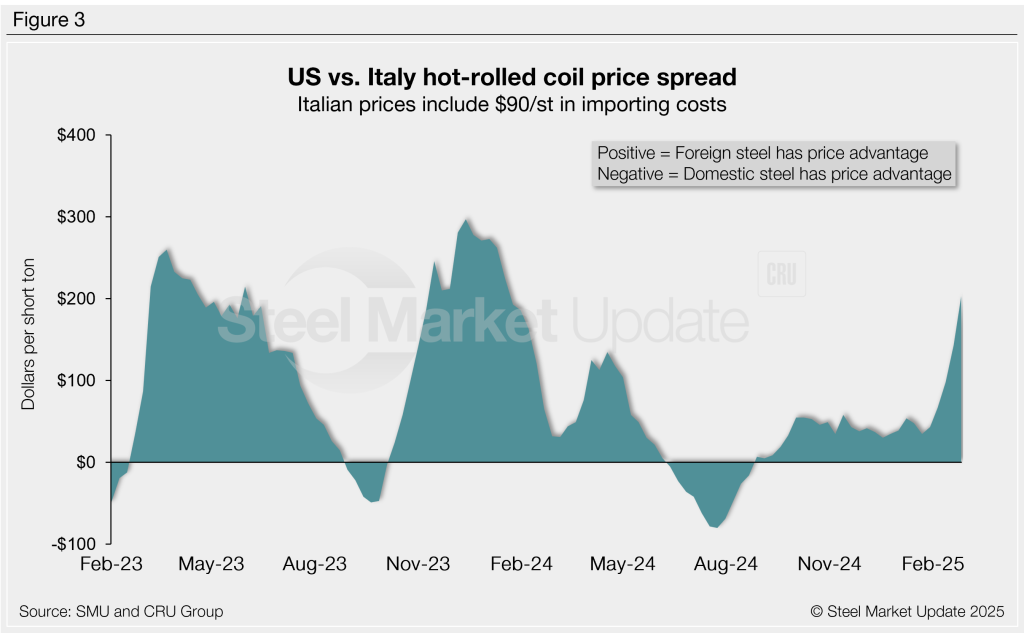
German HRC
CRU’s German HR price was up $16/st to $621/st this week. After adding import costs, the delivered price of German HR coil is, in theory, $711/st.
The result: Domestic HR is theoretically $169/st more expensive than HR imported from Germany, up $49/st from last week. Stateside hot band was at an $18/st discount about four-and-a-half months ago. At points in 2023, in contrast, US HR was as much as $265/st more expensive than imported German hot band.
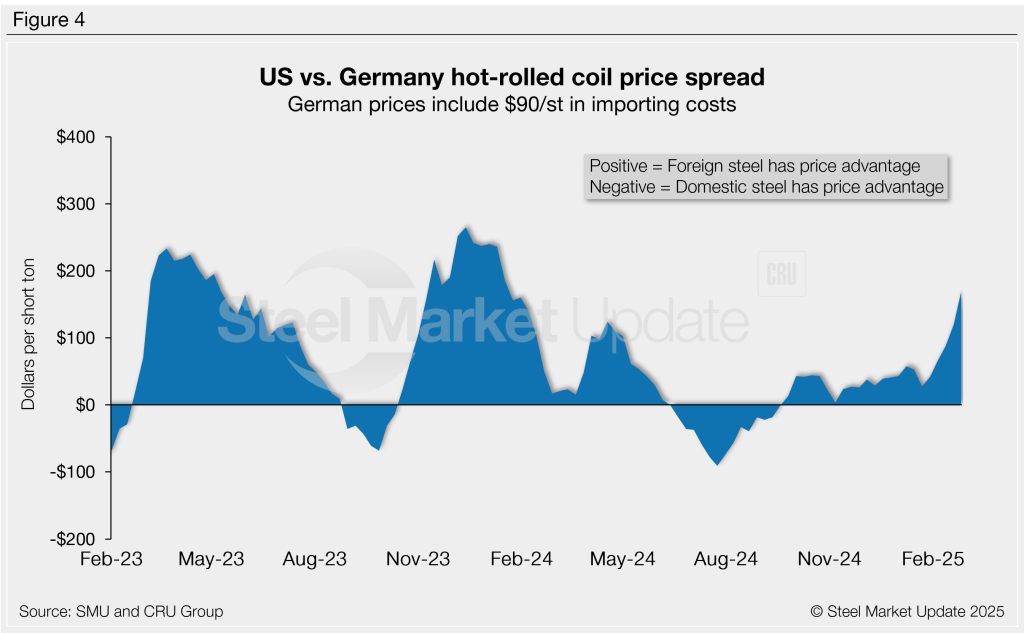
Notes: Freight is important when deciding whether to import foreign steel or buy from a domestic mill. Domestic prices are referenced as FOB the producing mill. Foreign prices are CIF, the port (Houston, NOLA, Savannah, Los Angeles, Camden, etc.). Inland freight, from either a domestic mill or from the port, can dramatically impact the competitiveness of both domestic and foreign steel. It’s also important to factor in lead times. In most markets, domestic steel will deliver more quickly than foreign steel. Effective Jan. 1, 2022, Section 232 tariffs no longer apply to most imports from the European Union. It has been replaced by a tariff rate quota (TRQ). Therefore, the German and Italian price comparisons in this analysis no longer include a 25% tariff. SMU still includes the 25% Section 232 tariff on prices from other countries. We do not include any antidumping (AD) or countervailing duties (CVD) in this analysis.

David Schollaert
Read more from David SchollaertLatest in International Steel Prices
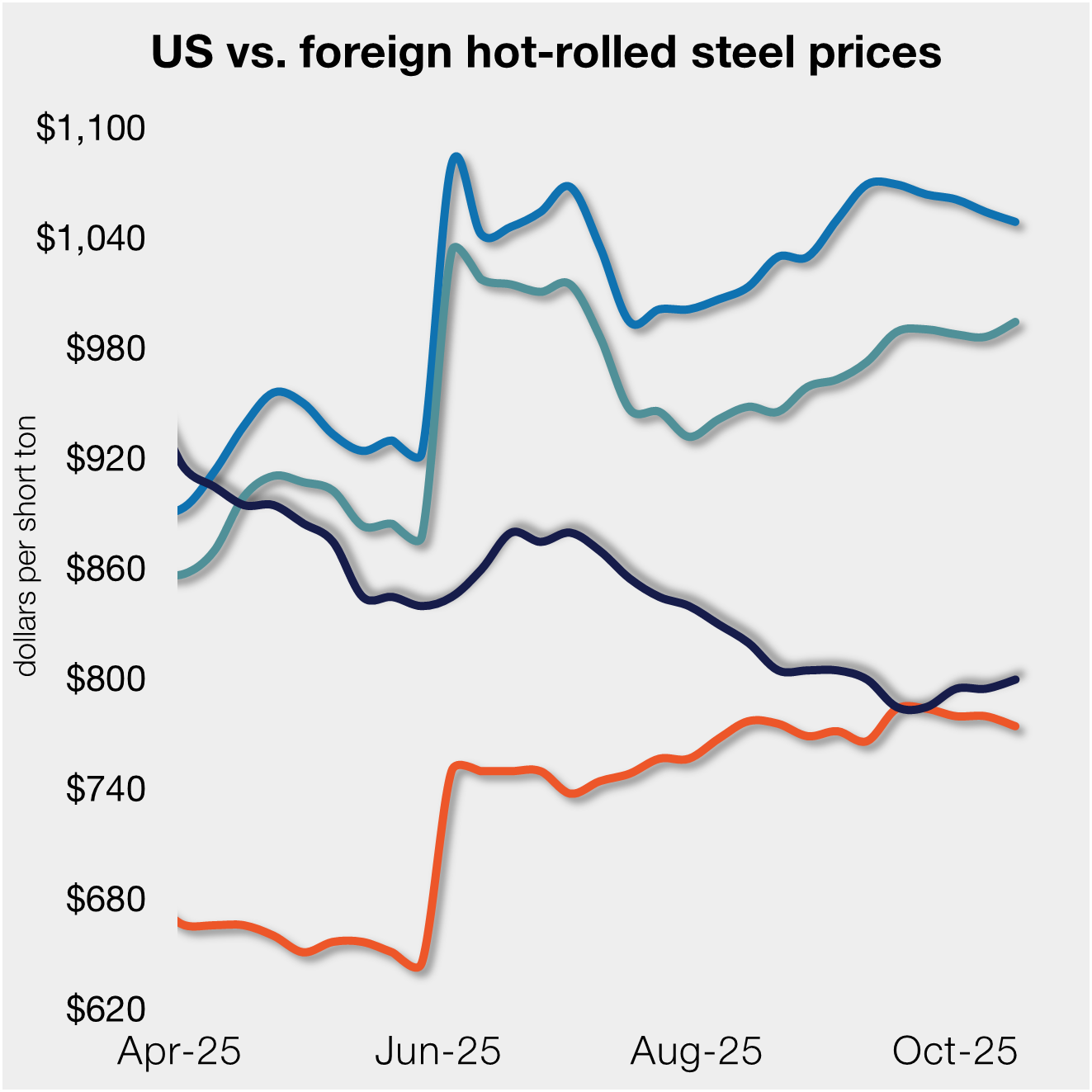
Gap between US HR prices, imports narrows
SMU’s average price for domestic hot-rolled (HR) coil was $800 per short ton (st) this week, up $5/st week on week (w/w). In offshore markets last week, prices were varied.
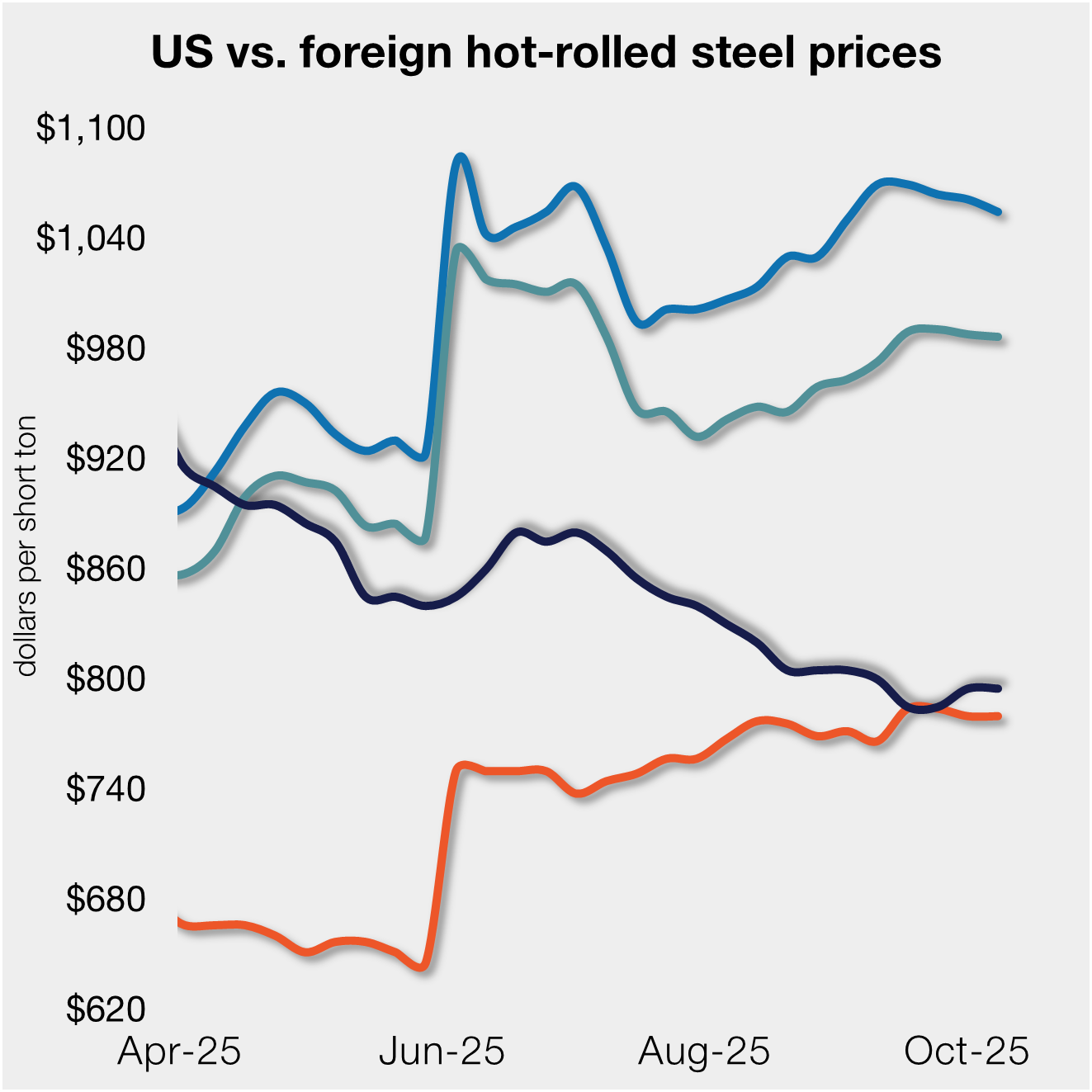
Gap between US HR prices, imports little changed
SMU’s average price for domestic hot-rolled (HR) coil was $795 per short ton (st) this week, sideways week on week (w/w). The move was different in offshore markets last week, as prices eased marginally.
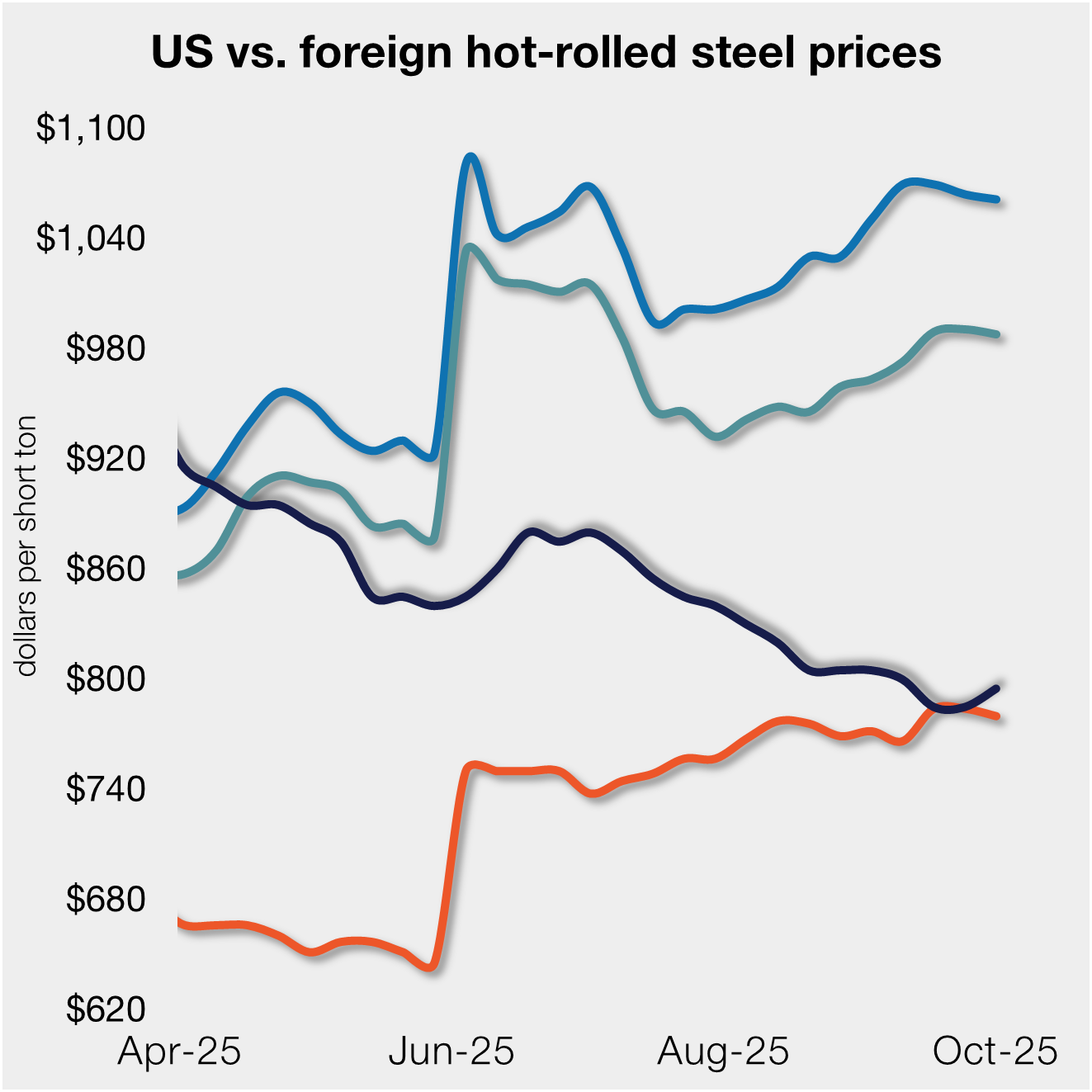
Gap between US HR and landed import prices starts to narrow
The price gap between stateside hot band and landed offshore product narrowed this week. Still, with the 50% Section 232 tariff, most imports remain much more expensive than domestic material.
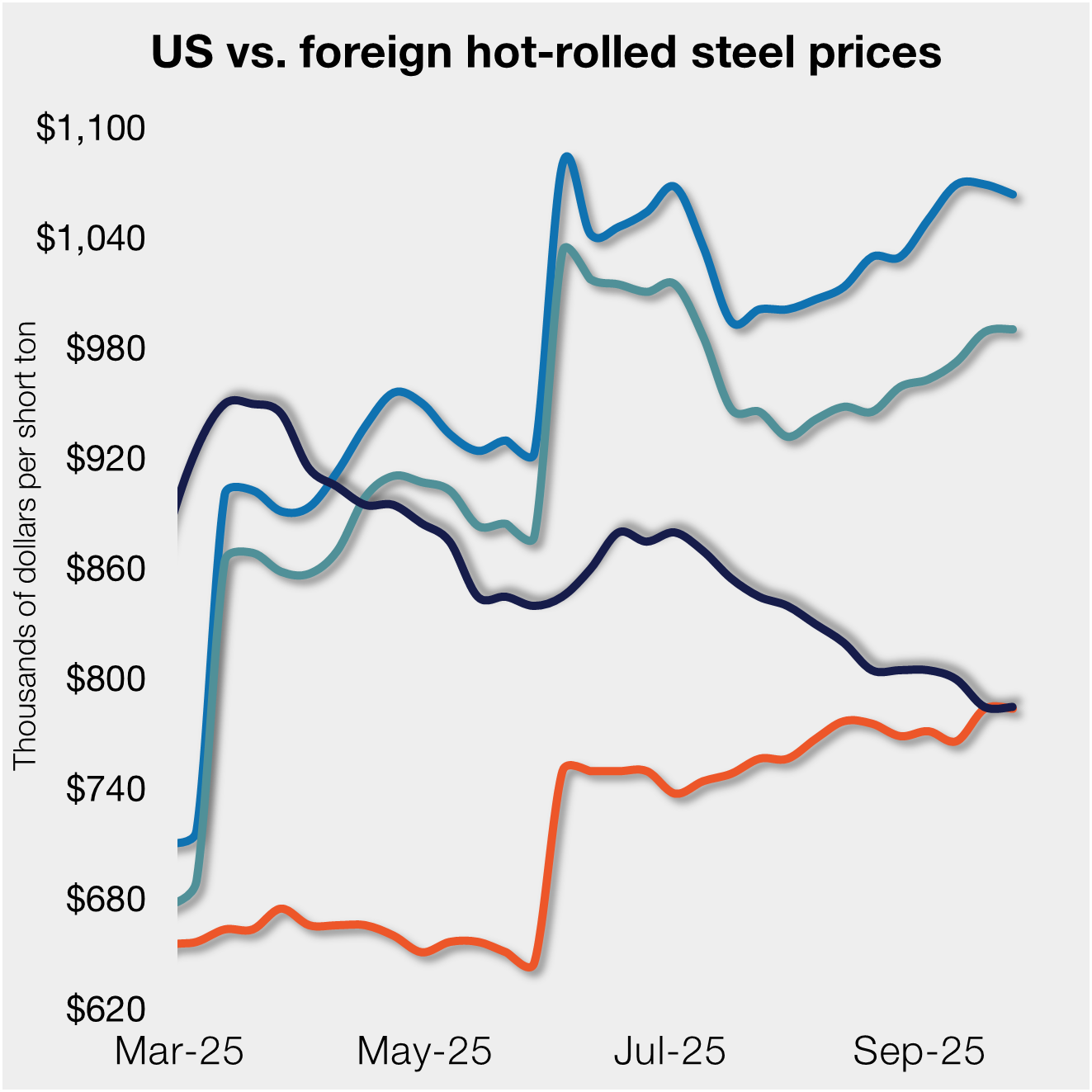
Little change in price gap between US HR, imports
SMU’s average price for domestic hot-rolled (HR) coil held at $785 per short ton (st) this week, unchanged week on week (w/w). A similar dynamic was seen in offshore markets last week as well.
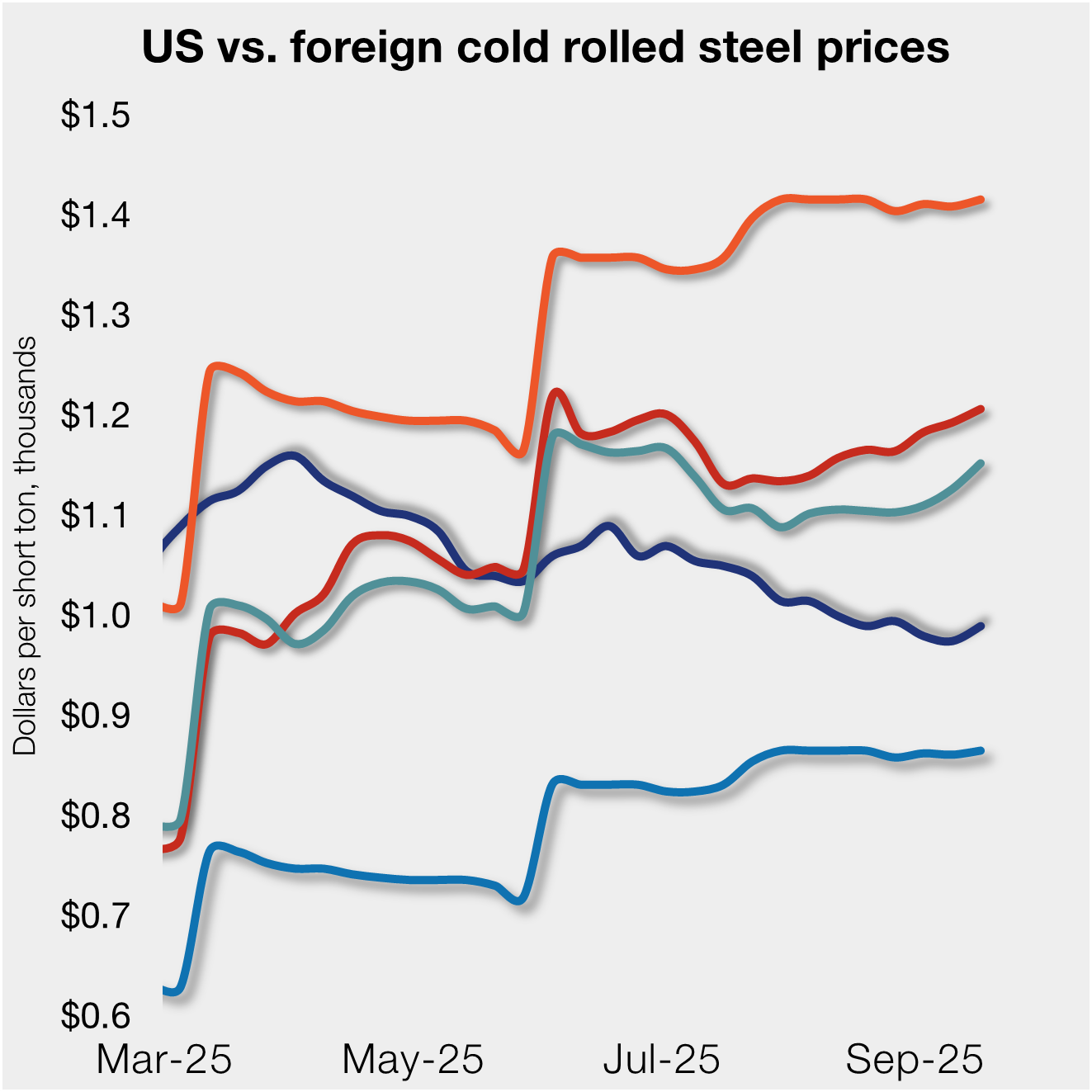
Price gap between US CR, most imports narrows
Cold-rolled (CR) coil prices ticked up in the US this week, matching a similar trend seen in offshore markets as well.
